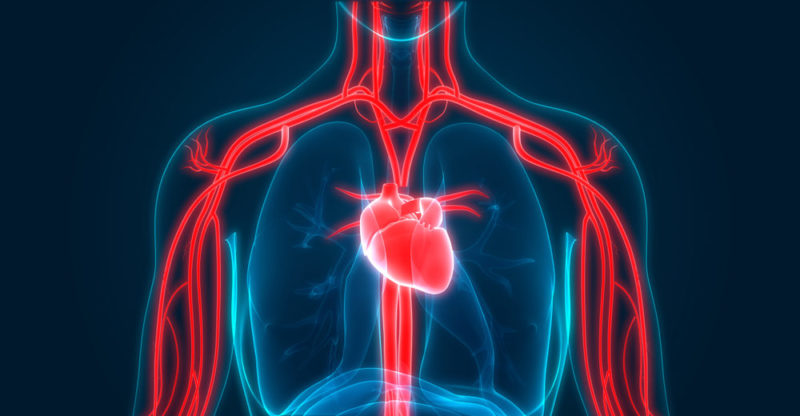We explain what the circulatory system is and what its main functions are. In addition, its characteristics and how is its structure.
What is the circulatory system?
The circulatory system is a complex system of structures, organs, and blood vessels . It is responsible for transporting and feeding nutrients to and from cells and tissues throughout the body . In addition to transporting nutrients, the circulatory system transports oxygen throughout the body.
The circulatory system is made up of one of the body’s main organs, the heart . This organ is a muscle that pumps blood to nourish the rest of the body. This pumping work can be done thanks to nerve impulses.
The heart is an organ that functions continuously from the moment of conception (when the embryo forms in the mother’s womb) until the moment of death of the living being .
The circulatory system is the combination of the functioning of the cardiovascular system and the lymphatic system . The cardiovascular system is made up of the heart, blood vessels, and blood; and the lymphatic system transports lymph unidirectionally towards the heart.
It is not exclusive to human beings , or even to animals . On the contrary, plants also have a circulatory system that we will detail later.
General function of the circulatory system
The function of the circulatory system is to pump blood so that different nutrients and oxygen reach the interior of the cells of each organ.
Specific functions of the circulatory system

- Transports nutrients from cells to organs
- transport waste products
- Regulates body temperature
- Regulates water balance
- It transports defense molecules , hormones and communication (carrying information to the brain , for example).
- participates in reproduction
The heart
The main organ of the circulatory system is the heart. This is located in the chest cavity . This is the organ responsible for generating blood to reach the different organs of the body
Ways of pumping the heart

The heart can have two pumps or four. The first is known as an open system. This one has two chambers, while the second one is known as a closed system and has four chambers.
- Respiratory system with a 2-chambered heart (open system). In this case, the blood flows freely throughout the body, but the oxygen is transported through tubes that open to the outside. Here is the circulatory system of insects and arachnids.
- Respiratory system with a 4-chambered heart (closed system). In this case, the blood circulates through the blood vessels and this blood does not flow out of the vessels. Mammals , in general , possess this type of closed system.
Blood vessels

Within the circulatory system are blood vessels. These might be:
- Veins. They are the blood vessels that carry blood back from the organs to the heart. This return lacks oxygen and nutrients.
- arteries. They are the blood vessels that leave the heart loaded with oxygen to the different organs. This blood always has higher pressure than that which circulates in the veins.
- Capillaries. They are tiny blood vessels of just 1 millimeter. In them there is an exchange between the blood and the fluid found in the cells of the tissues (called interstitial fluid). Oxygen passes through the capillary wall. This is how carbon dioxide enters the body (from the tissue to the blood) and leaves .
The blood

Blood is the vehicle by which oxygen and nutrients travel through blood vessels. To put it another way, blood is like the flow of a river . This is red in color and contains:
- Red blood cells. They are the ones that transport oxygen from the lungs to the tissues.
- Platelets. They are responsible for stopping bleeding and promote blood coagulation.
- white blood cells They are responsible for defending the body from viruses and bacteria . In other words, they are the body’s defenses.
- Plasma. Plasma serves as a transport for nutrients, but it is also in itself a substance that contains various proteins .
Lymphatic system

The lymphatic system produces and transports lymph from the tissues to the blood vessels . The lymphatic system is essential for the body’s immune system . Lymph is transported unidirectionally towards the heart.
Circulatory system diseases
- arteriosclerosis
- Myocardial infarction
- Arterial hypertension
- Arrhythmia
- Hereditary or congenital diseases
- Leukemia
- Stroke
Risk factors for the circulatory system
- sedentary lifestyle
- smoking
- Obesity
- hypercholesterolemia
- Mellitus diabetes
- Stress
The case of plants

Plants don’t have blood. However, they are composed of a substance through which different plant nutrients circulate . It is through the xylem that plants capture nutrients from their roots. This is how the sap travels from the roots and is distributed throughout the plant
On the other hand, there is the phloem, which is a type of tissue through which different substances pass for later storage.
This process begins when the plant takes in water from its roots . From there, the plant forms the crude sap that is transported through the xylem to the leaves. This sap is used to produce photosynthesis.
The above content published at Collaborative Research Group is for informational and educational purposes only and has been developed by referring to reliable sources and recommendations from technology experts. We do not have any contact with official entities nor do we intend to replace the information that they emit.














